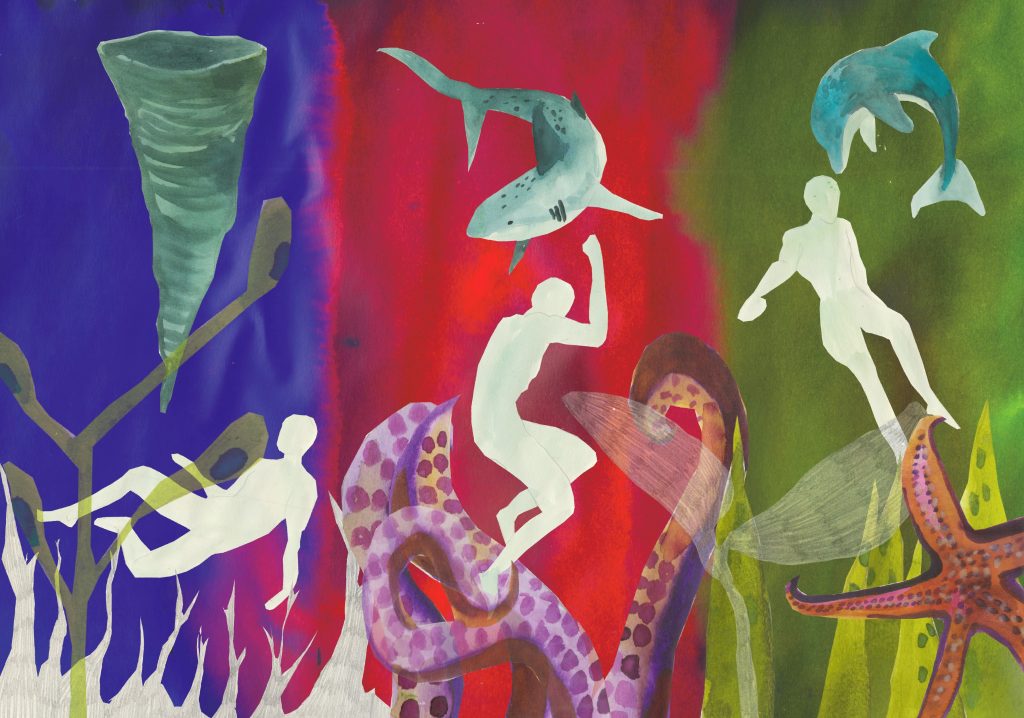About aggressiveness and how to cope with it.
Does not solely apply to children!
Are you sometimes feeling hopeless with your own anger, hardly describable inner tension? Or you are already out of options when your child is aggressive, has “the anger attack”?

There are different forms of aggression, from the physical violence through irony, sarcasm, passive aggression towards self-aggression (feelings of guilt).
Some of them are already accepted in our socio-cultural conditions. But in this article I would like to focus more on how different children education styles can keep away aggression.
And how we can ourselves get closer to this state. Yes, I especially have in mind bringing up children.
But as well how to work with our own aggression and how to cope in the best way with the inner and outside impulses.

What do displays of aggression bring us?
Aggression is in many views convenient and a help. For example to describe and protect our own territory (children analogy: bullying and such).
It is good not to prevent ourselves from showing feelings of dissatisfaction, sadness or anger to our children. That way the anger is not suppressed and we will not bring up anxious adults.
And it is useful to notice those negative emotions when they happen to us too. Because suppressed aggression can lead to many outcomes. The accumulation can explode in a much stronger anger at a totally inappropriate moment or can lead towards self-harming, self-tyranny.
That is reason why is it good to learn how to cope with aggression and teach it to our children.

Why are we sometimes aggressive?
In the book “concept of continuum” by Jean Liedloff, we can find a nice description about how children from the South American tribe Yequans are since their birth sufficiently saturated by love and by mother contact so that they do not tend to be aggressive at all.
Why is it like that? How is it possible that even adults are not aggressive while in other societies they are? An explanation is the fact that the baby starts to be anxious as soon as it feels insecure or misses the stable mother figure presence.
That results in two opposing behavior patterns for a child. Either the child will tend to be impulsive, aggressive, and provocative or on the contrary will be more turned down, compliant, pliable.
If there are two children in a family there is a tendency for kids to display those two opposing behaviors.

When the contact between parent and child is more distant, the child has to struggle more for attention, to be seen and noticed. Ultimately to get what he needs.
Indeed it is about setting up healthy relationships: harmonic but at same time having clearly defined and strong boundaries. When not set up this way, the child tends to experience anxiety and aggression.
Then it seems that the most important thing is physical contact between child and parent and attention. When a child does not have a need to require attention there is no aggression.
A very interesting fact is that in this South American tribe, even adults are not displaying any aggression. A possible explanation is that they are living fully “here and now”, accepting themselves how they are and are not judging.
They are not building their happiness on future goals; they do not feel a need to judge each other. In our socio-conditions it is usual that frustrated people feel a bigger urge to distinguish and judge differences between people.
In the western world there is as well a higher tendency to self-hate because we did not get the sense of our own “rightness” in our childhood. A real “enjoying of happiness, joy from life” is rarely seen by us.

But what to do if anger is already here?
When we are already facing that situation when our child has a burst of anger, is aggressive and we do not know any more what to do with ourselves. What to do then?
The key is contact. Connect with those emotions.
The child takes over values conveyed by parents so parents play a key role. But the solution is not only stability and strictness in upbringing but especially to be fully in contact with your child.
It is important that the child sees full support in his emotions, it is essential to show him or her that even such emotions are accepted and that we are able to bear them. So that is really good to keep calm and pay attention to emotions.

The rest is just to describe the situation that we can see.
A really interesting reading for those situations is the book “No drama-discipline”, in which a team of Gestalt psychotherapists base their methods on the new discoveries about child brain development.
For example, the authors encourage us to say “yes” to the emotions but not to the “bad/aggressive” behavior of the child. Unfortunately it is a reality that we, adults have often a tendency to stop and prevent kids from realizing what is actually happening inside of them.
We are rather taking away the attention from the feelings: “so stop crying” / “ Why are you so angry again?” So then how can children successfully work with emotions?

Why are we then surprised that even we often do not know what to do with ourselves, when we were raised in an absolute similar way?
We, adults having as a sole reference such suppression, can have the feeling that we are helpless to understand our emotions. That our feelings are totally inadequate.
So if we decide to not continue in such a pattern and we want to have a child who is an autonomous self-confident person, it is good to react on his feelings.
For example it is good to make contact: “I am here to help you, even though you do not have yourself under control and behave in a really horrible way, I can handle it. I secure you. Whatever is happening”.

And what to do with ourselves?
For us, adults, when we do not know how to cope with ourselves, a good first step is to come in contact with ourselves.
By listening ourselves. What is happening inside of me? What do I feel? Once admitting your own emotions and letting them out, we can allow them to leave from our lives.
It depends if we can find out the underlying source of aggression.
It can be about sadness (it is good to feel it, talk about it), it can be hunger or tiredness (which is possible to anticipate based on signals over time) or it can be loneliness, simple anger. But it is always important to stay tuned and in contact.

But I can not accept that?!
It is good to take this “bad, aggressive” behavior as a call for help, an effort to establish contact and closeness. In the mentioned book “No-drama discipline” the authors describe this “contact” as the most important part which is helps children to brain integration.
I quote: “The contact is helping children to make more well considered decisions, to control themselves better.” “By repeatedly experiencing that parents are emotionally perceptive and tuned in –by successfully establishing emotional contact- at a time when the brain self-regulation and self-calming down abilities are developing, children are proven to then have higher autonomy and resilience.”
Those are clear conclusions, which are not so easy to apply though in our daily lives. But we can learn them step by step.

So what is the solution?
To live more in contact with the baby but as well with our own emotions. Perceive and support the expression of emotions.
In the end, what I would like the most to encourage doing is to try to kindly embrace our own aggression or the aggression of our child. To take it in our arms. Then it is really possible that it simply disappears by itself or that it will transform. And there is no such a valuable experience


